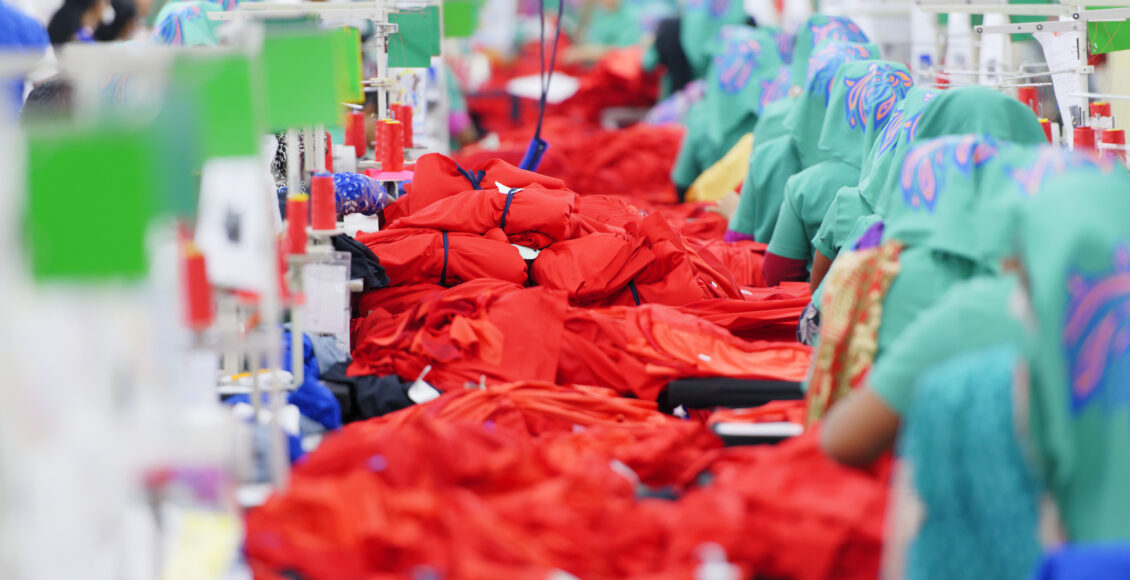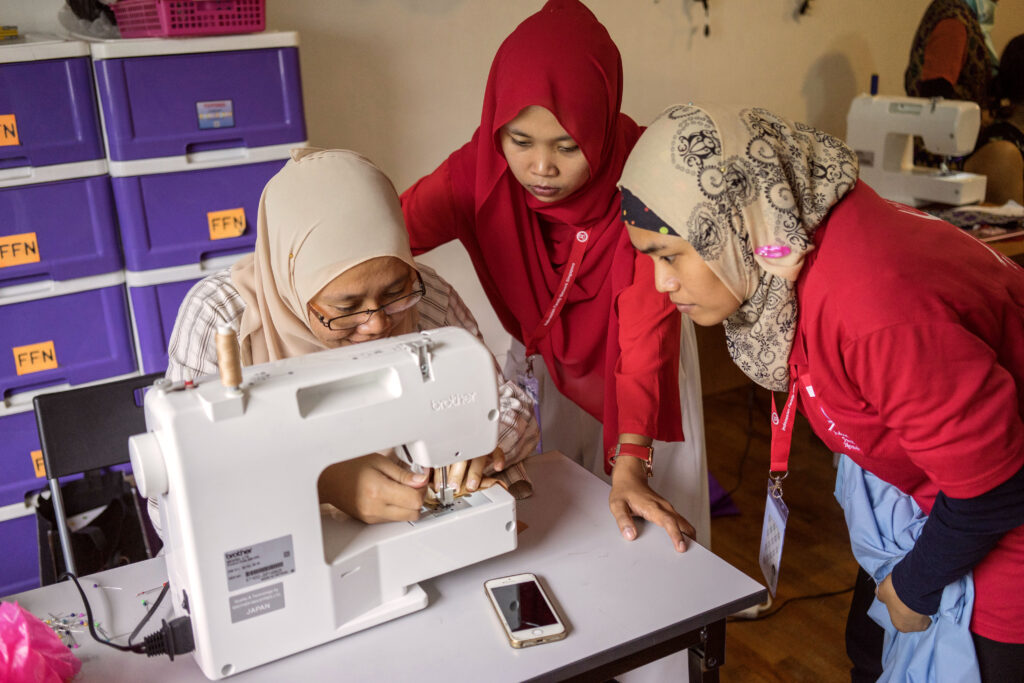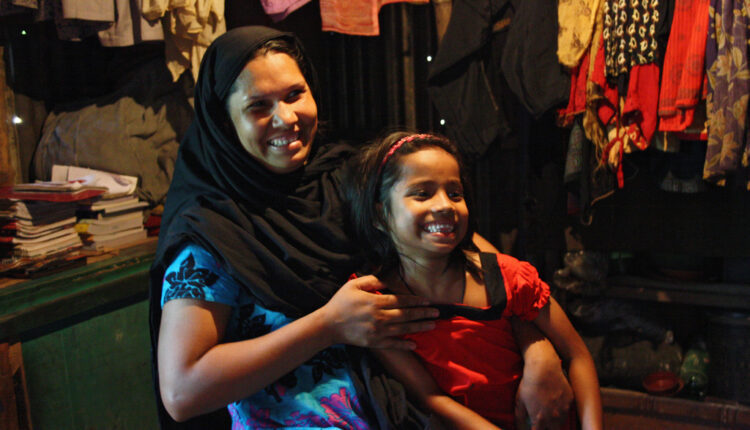Looking at International Labour Migration Through A Scholarly Lens: An Interview with Dr. Kazue Takamura

As a continuation of my previous article about the realities behind Philippine Overseas Migration, I turned to Dr. Kazue Takamura to provide insights from her research on the larger systems at play within the institutionalisation of labour migration. Her research has focused on Asian migration, gendered labour vulnerability, immigration detention, and international migrant rights. A prominent professor at McGill University, Dr Takamura’s knowledge and experience makes her an expert in the field. Having taken many of the undergraduate courses she offers, I asked questions based both on personal research and theories discussed in these classes.
This interview took place on the 8 of November 2024. It has been transcribed and edited for length and clarity since.
Maisie Wynd Smith : Your research has explored Asian migration regimes, particularly the paradox migrant workers face within a system that encourages transnational labour mobility yet enforces illiberal practices that ensure their disposability, exploitability, and lack of protection through heightened surveillance. To what extent does the liberal ideology of the global free market contribute to the disconnect between labour-sending and receiving countries, creating space for employers to exploit migrant workers with few or no repercussions?
Dr. Takamura: This notion surrounding “liberal” free mobility is deeply skewed, unfortunately. I think this is especially true for low-skilled, low-wage migrant workers – both men and women alike. They often lack access to basic rights and freedoms. Ironically, the discourse of International Development tends to celebrate mobility while completely overlooking the harsh realities these individuals face.
I have researched temporary workers in Canada and Japan, interviewing live-in care workers and undocumented migrant workers. Through these interviews, I understood how contemporary regimes of international labour migration have evolved in a way that controls and forces power over workers. For example, temporary foreign workers in Canada go through very exploitative processes. These include broker fees and pre-departure contracts, where they have to spend high amounts of money and often go into debt. These legal migrants are almost squeezed financially, while their labour rights are also not protected.
On the other hand, some are undocumented because of the abusive nature of the temporary visa employment environment. As a result, they might run away and become undocumented. This is because they are oftentimes tied to a specific employer for their visa. Undocumented migrants face an additional layer of precarity due to the criminalisation of their status. They live under constant fear of detention and deportation, making it nearly impossible for them to access protection or security. It’s impossible to be protected, right?
Going back to your point about this contemporary international-level migration regime, it is true that we do tend to celebrate its liberal nature. This being said, I do feel that the precarity of these labour migrants is basically designed into the system.
MWS: Would you say there is some potential for a “good” system to occur? Assuming such a disconnect is filled?
Dr. Takamura: I think that’s also another important question to ask because comparatively speaking, there is a lot of variation in terms of legal protection for migrant workers. Canada has perhaps a better environment in terms of such protection mechanisms. Labour rights are included under provincial standards. The Judiciary Court system, in my opinion, functions well in terms of addressing the cases that migrant workers bring.
This being said, universal immigration policy in itself somewhat discourages migrants from enjoying the rights that are available to them. This is because the entire temporary foreign worker program is based on the visa being tied to a specific employer. Their fundamental rights are not protected, and there is no concrete and comprehensive mechanism to ensure that they are. That is the first step in forming a good system.

MWS: There is significant scholarship on how women, in particular, manage ‘long-distance parenting’ and support families who rely on their remittance income. How do these parasocial relationships—with families at home dependent on their financial support while the workers try to sustain a familial bond—affect the level of harm or exploitation they are willing to tolerate in their host country?
Dr. Takamura: So I think this whole phenomenon is inevitable. With such a high reliance on labour export migration, family members are going to be separated. In the Philippines, for example, more than 10% of the population goes abroad – not including the undocumented. This makes you realise how the social aspects related to migration are largely hidden, as we tend to focus on labour aspects.
There’s so much literature on this topic, so I’d like to bring up 2 main points. Firstly, this social scope is a really important way to humanize this issue. I think largely the literature scholarship on this element comes from a feminist perspective. This is because such scholars try to understand women’s experience of family separation, particularly mothers. So I think these social costs of migration are not necessarily completely understood by development policy makers, and for those who design labour export policies.
For example, the Philippines. 50 years ago, the country basically started an institutionalized labour export policy. But how many policymakers and bureaucrats knew the burden would be placed on the children and mothers? We are talking about mothers trying to navigate parenting from afar – constantly checking Facebook, texting, and micromanaging. I’ve talked to many different caregivers in the Philippines, and these women don’t see their families for five or six years. They also can’t really go home because they’re hoping for permanent residency status. There is a gendered obligation to perform as a mother, even from afar. While there are many more scholars paying attention to this, it requires much more qualitative-based research. The emotional nature of it means you can’t really quantify it.
My second point is about how despite this permanent form of family separation, children also bear a generational burden. While the parents leave for work, second and third generation children grow up to do the same work. Sending countries’ situations have not necessarily improved, they are constantly sending. The Philippines just celebrated their 50 year anniversary of the labour export programme, but can the country necessarily afford to terminate this policy? They are completely reliant on remittances. So, I think it’s important to bring up the social costs. While it requires a gendered perspective, children are also quite often missing in the scope.

MWS: Scholarship on migrant worker resistance, including James C. Scott’s concept of ‘hidden transcripts,’ highlights subtle forms of resistance and discourse that take place away from direct observation of power holders. These include true thoughts and feelings of subordinates in a private space. This idea challenges the Gramscian assumption of ‘false consciousness’ traditionally associated with migrant labour, where workers are believed to live in a state of complacency.
In your view, within a system that relies heavily on migrant workers for its stability, how do these coping strategies—or ‘hidden transcripts’—both challenge and sustain the very system they resist? Can these acts of everyday resistance be understood as fundamental to migrant labour regimes, given that they provide workers with a means to endure and navigate exploitative conditions?”
Dr. Takamura: These workers’ hidden transcripts can challenge the whole system of the exploitation they exist within. With workers having such a difficult time claiming or demanding their rights because of broader structural issues and the fear of losing status, the hidden transcripts must remain hidden. These sentiments and dialogues should remain concealed from the power holders, as they tangibly control the workers. In that sense, hidden transcripts in some ways sustain the system of exploitation.
This being said, contemporary discussions surrounding migrant rights are multi-layered, with various actors involved. It is a very bottom-up approach to the migrant crisis. Particularly, it is important to give these migrant workers the space to speak up, and identify the profound discriminatory bias embedded in the system. At the same time, international human rights dialogues which try to codify these rights all the way up to the United Nations level are still quite limited. In many ways, these hidden transcripts can be public for the betterment of these human rights dialogues and subsequent policies.
Featured Image: Migrant workers at a garment factory in Jordan. “Garment employees work on a production line of an exporting clothing plant in Jordan.” by Say NO – UNiTE is licenced under CC BY-NC-ND 2.0
Edited by Hannah Lalonde
